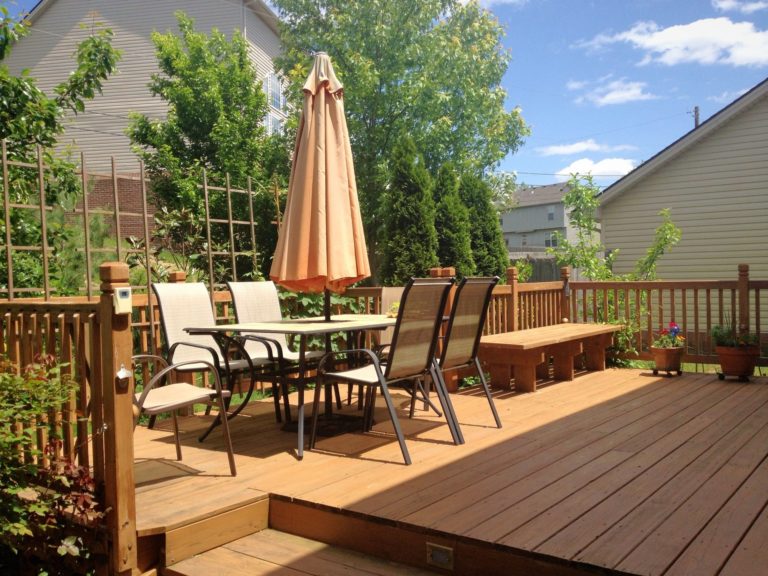How to Seal Wood Deck Products
As we noted in the opening, to protect your wood deck from the harmful impact that water can have on it, properly sealing it is necessary. Therefore, if you notice areas of dry rot, mold growth and/or splintering, it may need a new seal job.
Wait for New Decks to Weather
If your deck is brand new, don't seal it immediately. Allow the wood to weather for about a year so it can dry completely and the wood fibers can open up, which allows for better sealer absorption. While it may seem odd, letting new wood "settle" ensures the wood fibers fully open for optimal sealant penetration and quality results.
Pro Tip: During this weathering period, you can apply a new wood treatment product to provide temporary protection from rain and sun while the wood adjusts.
Clean the Deck Thoroughly
Under no circumstances should you be applying a sealant coating with leaves, chipped paint and debris on the surface of the deck. Start with an initial sweep to remove debris, then use either a push broom or long-handled brush and a cleaning solution to do the rest of the job. You can also use a power washer to help clean the deck, just be sure not to hold it too close to the wood itself (12-18 inches from surface) to avoid potential damage. Clean between deck boards where dirt and moisture accumulate.
Remove Old Finish
Now that you've done the initial cleaning, take some time to remove any paint or old sealant (if necessary). In the event that you're re-sealing a deck, you may even decide to sand down the wood in certain spots of ruggedness to permit a smoother end result.
Warning: Older surfaces may have lead paint. Be careful before scraping, stripping or removing lead paint. If you scrape, sand or remove old paint, you may release lead dust. Lead is toxic. Exposure to lead or lead dust can cause serious illness.
Apply the Sealant
Now that the deck is cleaned, it's time to apply the sealant. When you do this, the deck should be completely dry in order for the sealant product to be absorbed properly by the wood.
There are two main types of sealant – clear sealant and pigmented sealant. The big benefit of using a clear sealant is that it won't alter the natural color of the wood it's covering. However, clear sealants don't provide ideal UV protection, so they have to be reapplied more often, usually about once every 12 to 18 months.
Pigmented sealants do a better job of protecting against both moisture and the sun's rays, and only have to be reapplied about once every three years. However, match the color carefully with the pigmented sealer because it will alter the color of the wood upon application. Typically, a pigmented sealer doesn't stand up to foot traffic as well and must be applied carefully, as uneven application will be noticeable. You can also combine a pigmented sealer with a clear sealer for a "best of both worlds" type of end result that maximizes protection.
Ongoing Protection and Maintenance
Just because sealant is now applied doesn't mean that your deck can't still incur damage. We strongly recommend regularly sweeping and cleaning your deck off, especially if you live in a wooded area. Regularly inspect your deck to check that dirt and debris aren't settling in between the boards of the deck. These areas tend to retain moisture and can often cause mold and mildew growth. Try to care for your wood deck the same way that you'd care for the flooring on the interior of your home – clean it regularly and perform more intensive maintenance when necessary or at least once a year. Perform a thorough inspection annually or more frequently if you live in an area with inclement weather.

